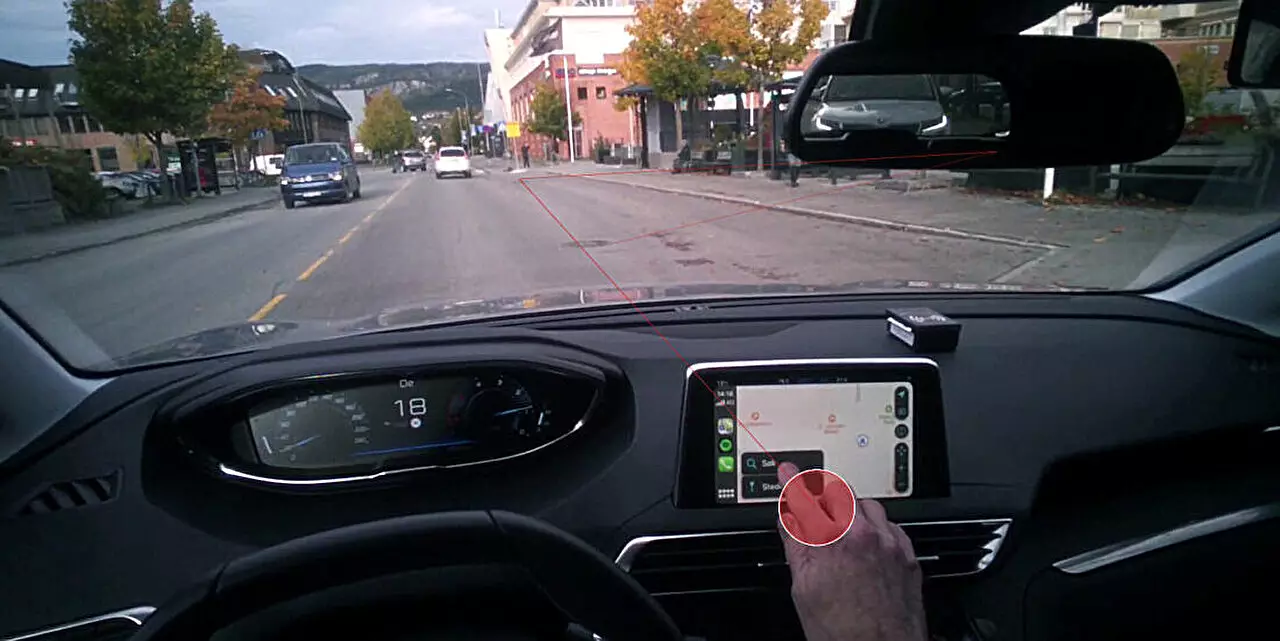In an era where technology integrates seamlessly into our daily lives, the automotive world is no exception. Cars are no longer just a means of transport; they have transformed into hubs of modern technology, outfitted with advanced interfaces that often feature touch-sensitive screens. However, this evolution raises urgent concerns about driver safety. Imagine cruising through suburban streets when a notification prompts you to enter an address on your vehicle’s screen. In an ideal world, your focus would be on the road ahead, yet the allure of the digital interface proves irresistible. This scenario encapsulates the core issue addressed in a recent study by SINTEF, which meticulously examines how these high-tech features encroach upon driver attention.
The SINTEF project conducted extensive research on the behavioral patterns of drivers as they interacted with touchscreen systems. Senior Research Scientist Dagfinn Moe and his colleague, Research Scientist Isabelle Roche-Cerasi, focused specifically on the unintended consequences of driver distractions induced by these technologies. Through systematic observation of 44 drivers engaging with their vehicle’s touchscreens, the researchers compiled over 3,000 instances of interactions. Alarmingly, they found that a staggering 75% of drivers would spend less than half a second looking at their screens, though instances of prolonged attention exceeding two seconds were not uncommon. This seemingly brief gaze carries profound implications: a mere two seconds of distraction can double the risk of an accident.
The variability in driver behavior adds another layer of complexity. The researchers noted that self-regulation plays a significant role—individuals differ not just in how often they check their screens but also in their ability to gauge the demands of their driving environment. Some drivers seem blissfully unaware of the escalating risks as they juggle screen interactions amid their driving tasks.
Undeniably, the challenge lies in balancing the conveniences touchscreen technology offers with the inherent risks of distraction. Moe emphasizes the importance of “situational awareness,” urging drivers to prioritize the road and comprehend their vehicle’s behavior. This sentiment resonates with safety advocates like Ann-Helen Hansen from Trygg Trafikk, who highlights the stark reality that one out of three fatal accidents can be attributed to driver inattention, a phenomenon exacerbated by the allure of screens.
Despite the undeniable risks, both Moe and Roche-Cerasi caution against advocating for an outright ban of touchscreen technologies in vehicles. Their findings suggest that the traffic context—such as road conditions, speed, and the nature of the task at hand—must also be taken into account. Some distraction is inevitable, but drivers must adapt their behavior accordingly and begin integrating safer practices, such as utilizing voice commands instead of blindly reaching for the touchscreen.
Given the evidence garnered from the SINTEF research, it’s apparent that merely recognizing the potential hazards is not sufficient. A proactive approach is crucial. For instance, favorable regulatory changes may be necessary to counterbalance the distractions veiled under the guise of technological advancements. By 2026, the vehicle safety agency Euro NCAP plans to introduce new standards that would require manufacturers to include physical controls for critical functions, diminishing the reliance on touchscreens while driving.
While encouraging the implementation of such regulations, it is equally important to instill awareness among drivers. The recommendation for drivers to utilize voice controls rather than touchscreen interactions cannot be reiterated enough. Encouraging drivers to remain vigilant and emphasize their surroundings while in control of a vehicle is crucial for minimizing risks associated with driver distraction.
As we venture further into an era characterized by reliance on technology, the implications for road safety become increasingly salient. The benefits that come with touchscreen interfaces and smart car technology should not come at the cost of human lives or safety on the roads.
The SINTEF study serves as a compelling reminder that the allure of technological convenience can cloud our judgment, underscoring the need for an ongoing dialogue about the consequences of multitasking while driving. It is imperative for all stakeholders—drivers, manufacturers, and regulators—to collaborate towards solutions aimed at minimizing distractions. The road ahead demands a collective effort, demonstrating that innovation in the automotive industry must go hand-in-hand with the fundamental principle of safety.

